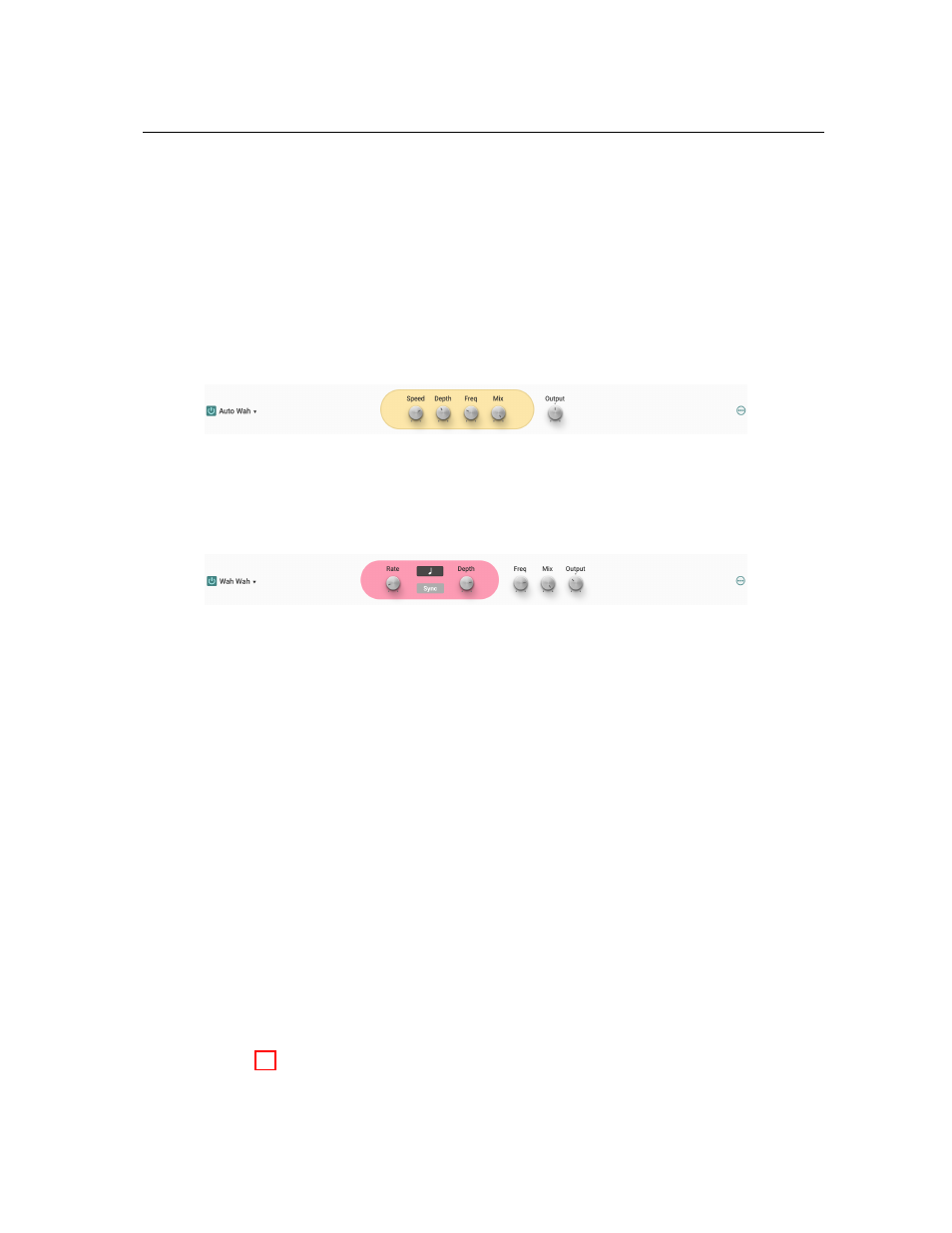Wah wah, Notch filter – Applied Acoustics Systems Chromaphone 3 Upgrade Acoustic Object Synthesizer Plug-In (Download) User Manual
Page 59

5.4
The Effects Section
59
wet signal is sent to the output.
5.4.8
Wah Wah
The Multi-Effect module includes 2 different types of
Wah
effects: wah wah, and auto wah. These
effects are used to enhance a frequency band around a varying center frequency using a bandpass
filter. In the wah wah effect, the center frequency of the bandpass filter varies at a rate fixed by
the user. In the case of the auto-wah, the variations of the center frequency is controlled by the
amplitude envelope of the incoming signal.
The
Freq
knob is used to control the central frequency of the filter. Turning this knob clockwise
increases the center frequency. In the case of the
Wah Wah
effect, the center frequency will oscillate
around the value fixed by the
Freq
knob while with the
Auto Wah
effect, the setting of the
Freq
will
fix the starting point value of the varying center frequency.
The
Depth
knob controls the excursion of the center frequency of the filter. In the case of
the
Wah Wah
effect, this excursion is applied around the value fixed by the
Freq
knob while in
Auto Wah
effect the value of the center frequency increases from the value fixed by the
Freq
knob.
Turning this knob clockwise increases the excursion of the center frequency.
The
Rate
knob controls the frequency or rate of the modulation of the center frequency of the
filter. In the case of the
Wah Wah
effect, turning this knob clockwise increases the rate of the
modulation. In the case of the
Auto Wah
filter, this knob is labeled
Speed
and controls the time
constant of the envelope follower. Turning this knob clockwise decreases the time constant, or in
other words the reaction time, of the envelope follower.
The
Mix
knob allows one to mix the dry and wet signals. In its leftmost position, there is no
output signal from the chorus and one only ears the dry input signals. In its rightmost position, one
only ears the wet signal from the chorus module. In its center position, there is an equal amount of
dry and wet signal in the output signal from the module. Finally, the
Output
know is used to adjust
the output level of this module.
5.4.9
Notch Filter
The
Notch Filter
does essentially the opposite of a band-pass filter. It attenuates the frequencies
in a band located around the center frequency and leaves those outside of this band unchanged as
shown in Figure 35. As was the case for the
Wah Wah
effect, the filter can be modulated.
